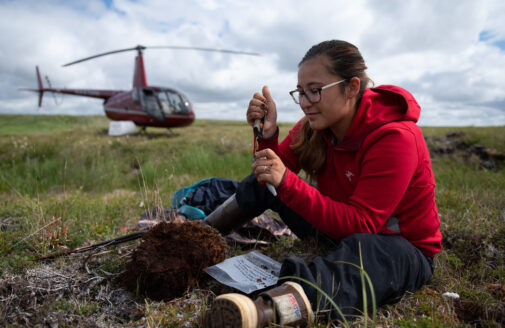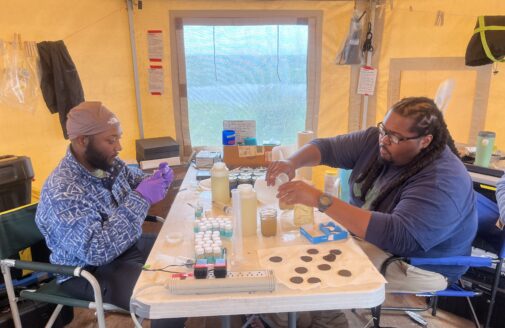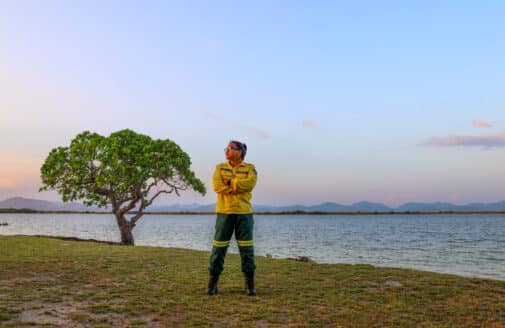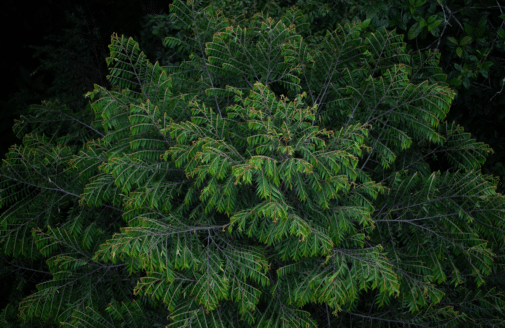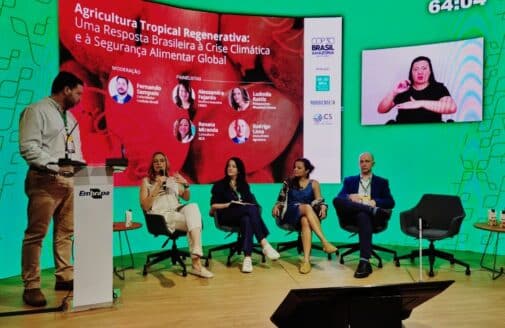Climate Justice Committee sows the seeds for institutional change
For Climate Justice Specialist Dr. Nigel Golden, making climate science just and equitable is akin to watching an ecosystem evolve over time
Looking up in the Tongass National Forest, AK.
photo by Nigel Golden
In February, Woodwell Climate Research Center’s new Climate Justice committee gathered for the very first time. Even through the computer screen, you could feel it—a buzz of anticipation, the spark of hope, as folks from across the organization came together to dream about the vision and goals ahead.
This was no ordinary meeting—it was the first step in what many hope will be a transformative journey for Woodwell Climate, guiding us toward a more just and equitable climate future. Like a handful of seeds taking root, this meeting was full of potential. Participants shared ideas and intentions that, with care and nurture, could grow into something powerful that reshapes the landscape of Woodwell Climate’s global impact.
Climate justice is indispensable to Woodwell’s work
Climate change is being felt around the world, but as its effects become more frequent and intense, the unequal impacts on different communities become more obvious. Some communities are disproportionately affected, while others benefit more from societal responses to climate change.
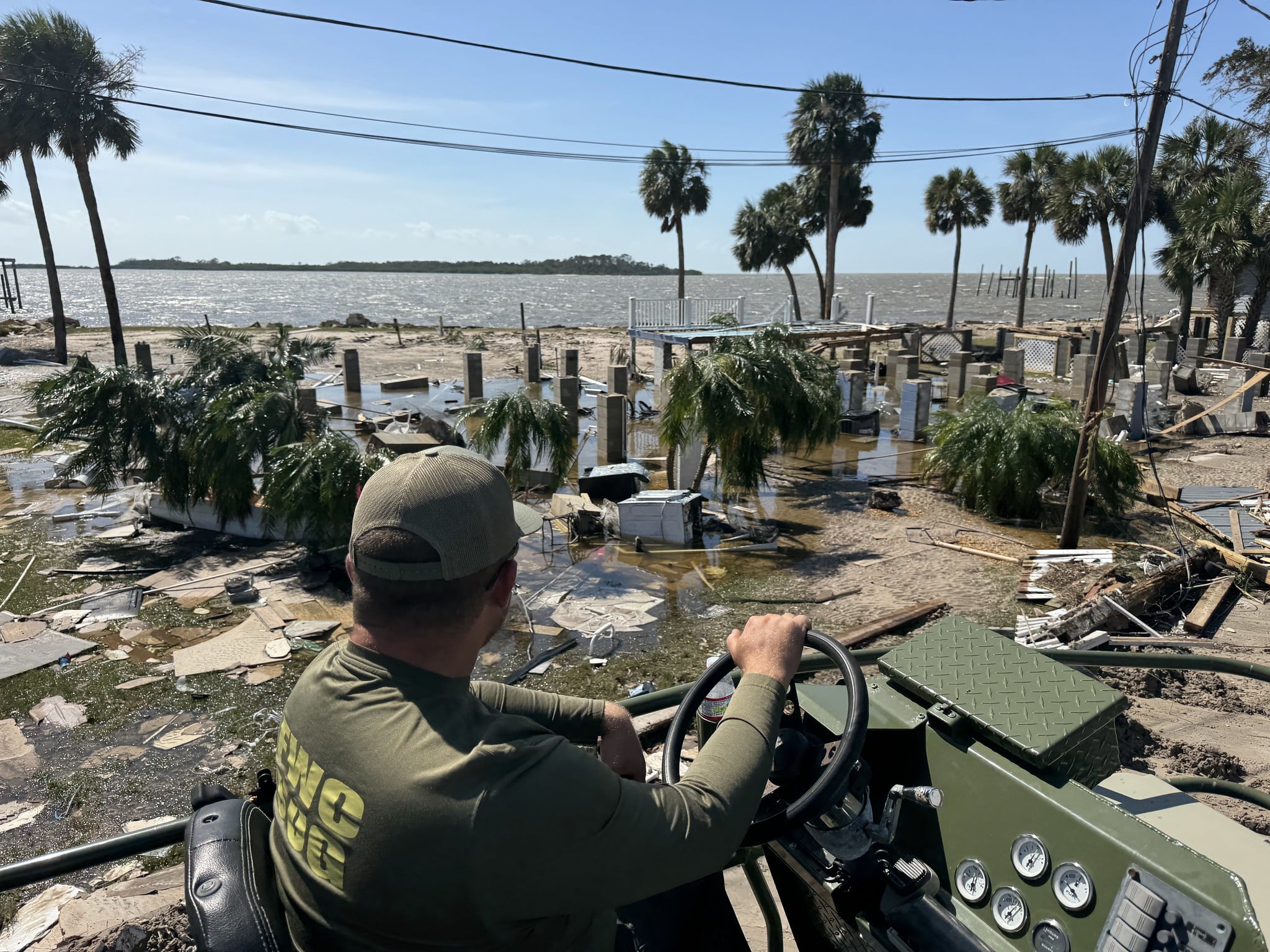
A Florida Fish and Wildlife Commission Officer surveys damage from Hurricane Helene.
photo courtesy of Florida Fish and Wildlife/ Flickr
A salient example of this can be found in the aftermath of climate-related disasters like hurricanes or wildfires. Affluence of a community or country plays a role in shielding citizens from the worst effects of the disaster, and efforts to rebuild are often much swifter. Meanwhile, low income communities must often face forced displacement, material destruction, and cultural degradation.
This growing disparity underscores the need for research and solutions that acknowledge and work to rectify these inequities. Because climate change creates and exacerbates inequitable situations, addressing disparity must be a central consideration in both current climate research and long-term climate adaptation strategies.
Climate justice is an approach to addressing climate change that not only considers, but centers, disproportionate impacts. It integrates principles of social justice, human rights, and equity, emphasizing the interconnectedness of environmental issues with systems of oppression. By centering those most affected by climate injustice—who are also the least responsible for causing it—climate justice reframes the issue as not only scientific, technical, or financial, but as a moral and justice concern. It requires us to consider not just where and how climate change is happening but also who is excluded or marginalized by the physical and social mechanisms of climate change and by any adaptation or mitigation efforts we pursue.
As an institution dedicated to using science to inform climate change policy, integrating climate justice enriches our work in five significant ways.
- First, by identifying who is disproportionately affected, our research and policy recommendations can be more targeted and effective in addressing vulnerabilities that might otherwise be overlooked.
- Second, demonstrating a commitment to equity in our work increases our credibility and broadens our support among diverse stakeholders, including members of historically marginalized communities.
- Third, understanding the social, cultural, and economic contexts in which climate impacts occur allows us to develop strategies that are not only scientifically sound but also socially relevant and adaptable.
- Fourth, policies shaped with an awareness of who is excluded or marginalized are more likely to succeed because they are grounded in the realities of those most affected.
- Lastly, by considering who is excluded or marginalized, we can address not only the symptoms but also the root causes of climate injustice, leading to more comprehensive and lasting solutions.
Moss and lichen covering the Arctic tundra.
photo by Chris Linder
Nurturing a growing climate justice ecosystem
It’s essential to remember that this kind of transformative work is often slow, challenging, and asks for a commitment that stretches beyond the urgency of the moment. There’s no magic wand, no quick-fix—something we know deeply, sometimes frustratingly, from our scientific work. Real climate justice isn’t something you can cook up in isolation or rush through with a checklist. It’s born from the steady, patient work of weaving relationships, dismantling entrenched inequalities, and watering the seeds of small, consistent actions—nurtured across many hands and hearts over time, even when the growth feels almost imperceptible.
Think of it like the slow growth of trees that eventually give rise to forests—subtle, persistent, inevitable. The key is to stay rooted in purpose, grounded in the values that guide us, trusting that even the smallest efforts will accumulate into something deep, something strong, something lasting—like a mature old-growth forest, resilient through the cycles of time.
The work we’re doing as a committee is very much in its early, tender stages. It is dynamic and evolving, like the ‘pioneer stage’ of a forest’s life. Here, the groundwork is being lovingly (and with considerable effort) laid for what’s to come, like the lichens and mosses breaking down rock, slowly transforming barren ground into rich, life-giving soil. In these first steps, we are creating the conditions for future growth, for future flourishing.
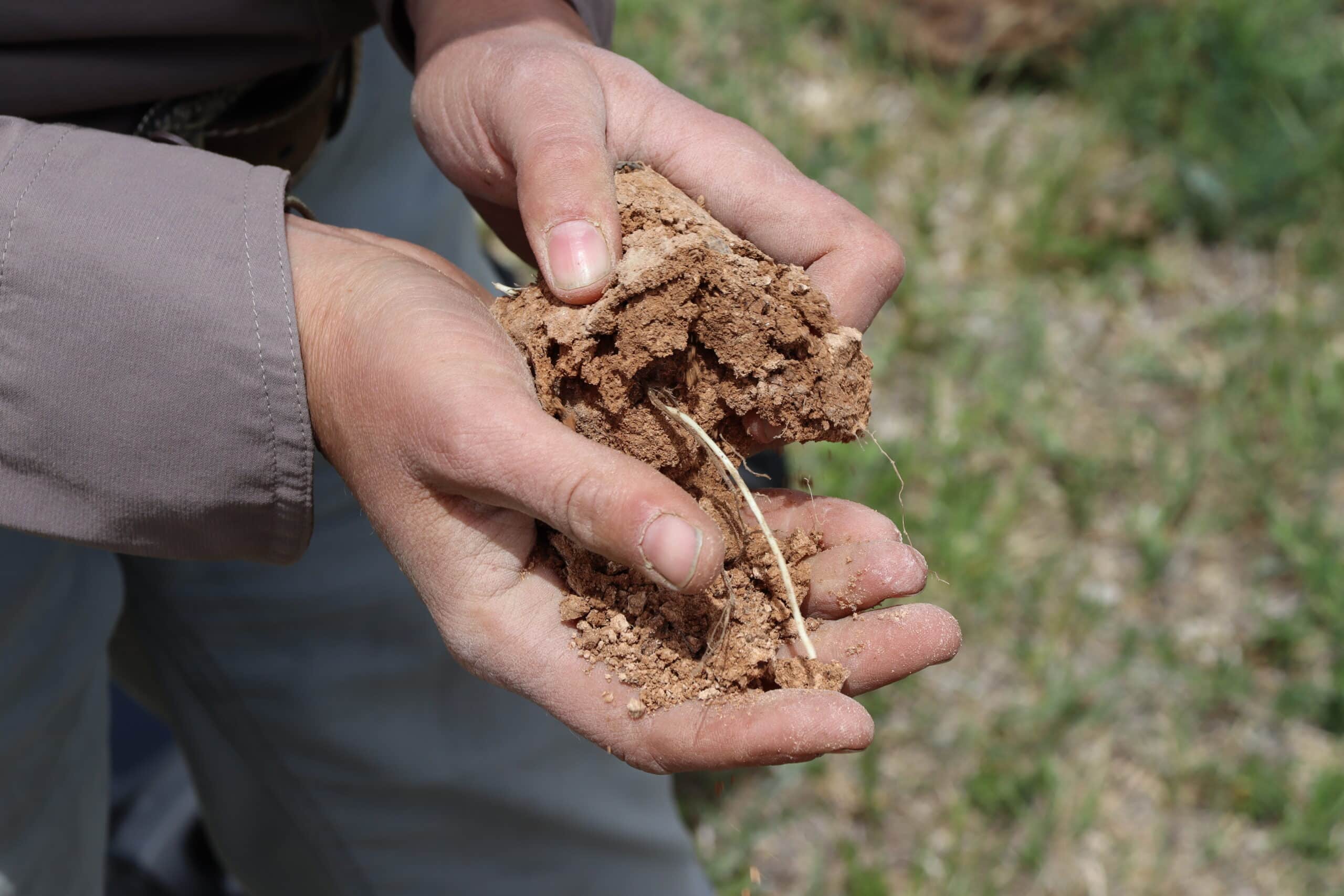
A crumbling section of a soil core with a root running through it.
photo by Sarah Ruiz
As we move forward, the process becomes more complex—a kind of intermediate stage. Dandelions, grasses, the boldest and most audacious plants take root first, thanks to the quiet, persistent work of the mosses and lichens. The rest need a little more nurturing, a bit more care. Diversity begins to blossom—shrubs, small trees, and layers of life start to interweave, creating habitats for fungi, microbes, and animals. The community is expanding, deepening, finding its rhythm. Together as a committee we will expand our capacity to interweave more complex ideas and projects, allowing our work to deepen and evolve like a thriving ecosystem.
And then, like the forest maturing into its climax stage, we envision a time when the ecosystem is stable, resilient, and thriving—a rich blend of old, wise trees and vibrant new growth. A place where deep-rooted interconnectedness allows life to sustain itself, weathering disturbances with grace. As a Climate Justice Committee, we aim to create a space where renewal is constant, change is embraced, and growth is continuous—ever adaptive, ever committed to justice, and ever alive to the needs of all, as Woodwell Climate continues to work towards an equitable, healthy and sustainable world.
Pioneering climate justice work at Woodwell
Our first offering as a committee of mosses and lichens is to craft a set of actionable recommendations to help guide Woodwell Climate toward a future where our work is deeply rooted in the principles of climate justice, rich in diverse perspectives, and resilient in the face of challenges. This is our way of fostering the right environment for the seeds of future work to grow into a thriving, enduring ecosystem of ideas and actions. Our pioneer stage isn’t growing from a completely “barren substrate” however. We’re rich in resources—our science, staff, partners and you, our supporters reading this!
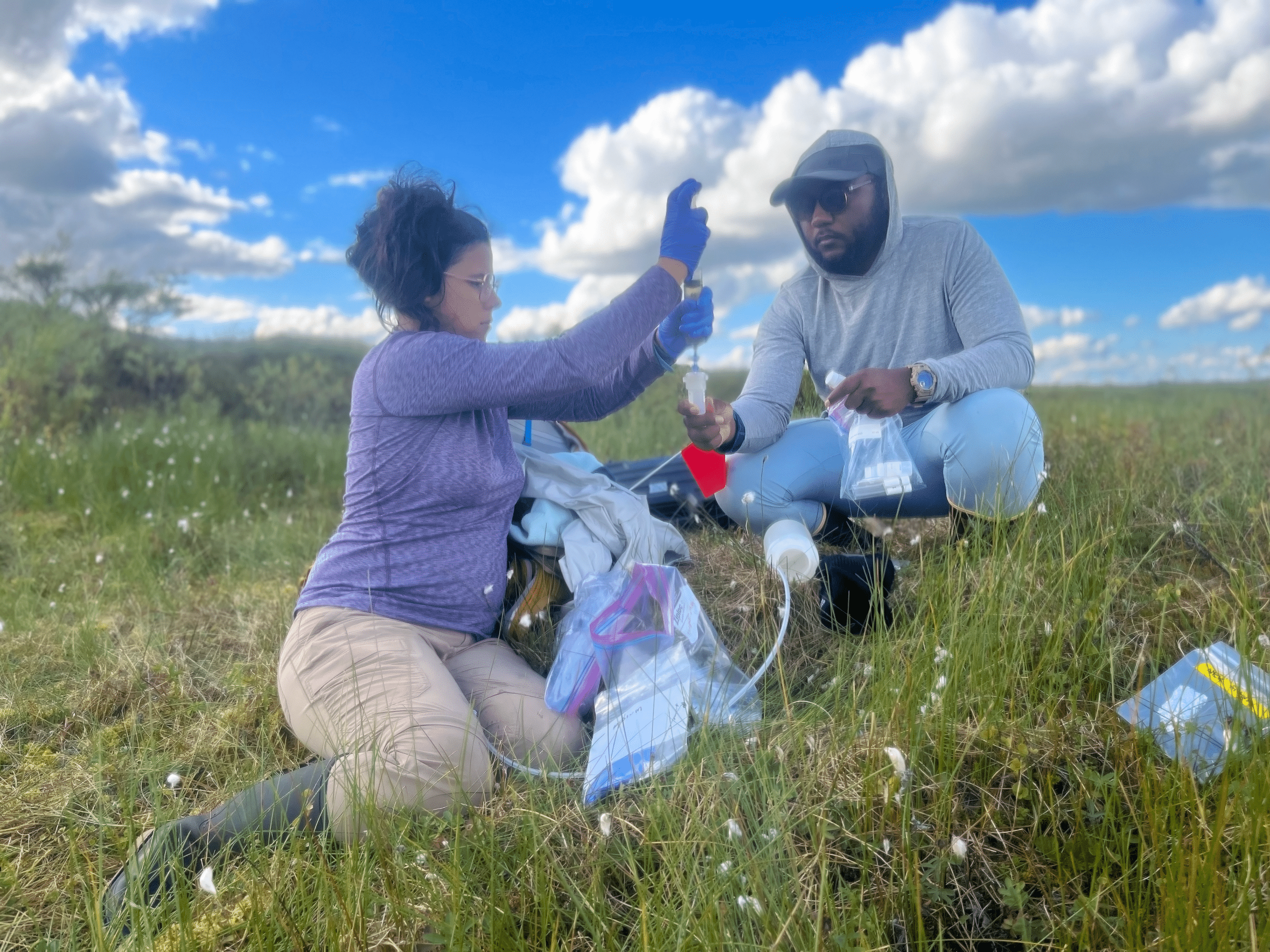
Golden helps student researcher Esmeralda Torres Martínez collect samples.
photo by Sue Natali
While developing these recommendations will be inherently challenging, it’s critical that we get it right together. How we reach our goals is just as important as the goals themselves, and our collaborative process should reflect principles of justice, equity and mutual support. In other words, the process itself should be a model of the world we are trying to create.
Drawing inspiration from Team Science—a collaborative approach to scientific challenges—Adrienne Maree Brown’s Emergent Strategy, which highlights the importance of cultivating relationships, trust, and community-building in collaborative work, and Dean Spade’s Mutual Aid, which emphasizes equitable distribution of roles, responsibilities, and credit in a supportive environment, we have created a team charter, establishing the principles guiding how we will work together.
The team charter aligns members on the goals we are working toward and how members will approach the work together, providing clarity and focus. It creates a shared understanding of the team’s purpose and mission and fosters a sense of ownership and commitment that makes it easier to stay focused on long-term goals. By clearly defining roles and responsibilities, the charter reduces confusion and prevents overlap, ensuring that everyone’s contributions are recognized and understood. The guidelines for equitable participation, decision-making, and conflict resolution, set forth in the charter, help build a culture where all voices are heard and respected. Principles of flexibility and continued improvement are embedded into the charter as well, allowing the team to adapt as needed.
Our hope is that this foundational work, like the pioneer stages of a forest, sets the stage for a process of ongoing growth, adaptation, and transformation that will carry Woodwell’s climate justice work into the future. As our work progresses (starting now with developing those recommendations), we’ll move through the intermediate stages of ecological succession—where new members are integrated and experimentation thrives. We’ll learn from both successes and setbacks, like our scientists testing their ideas in the field. Ultimately, we’ll cultivate a mature, stable ecosystem, where deep-rooted relationships hold the committee together.
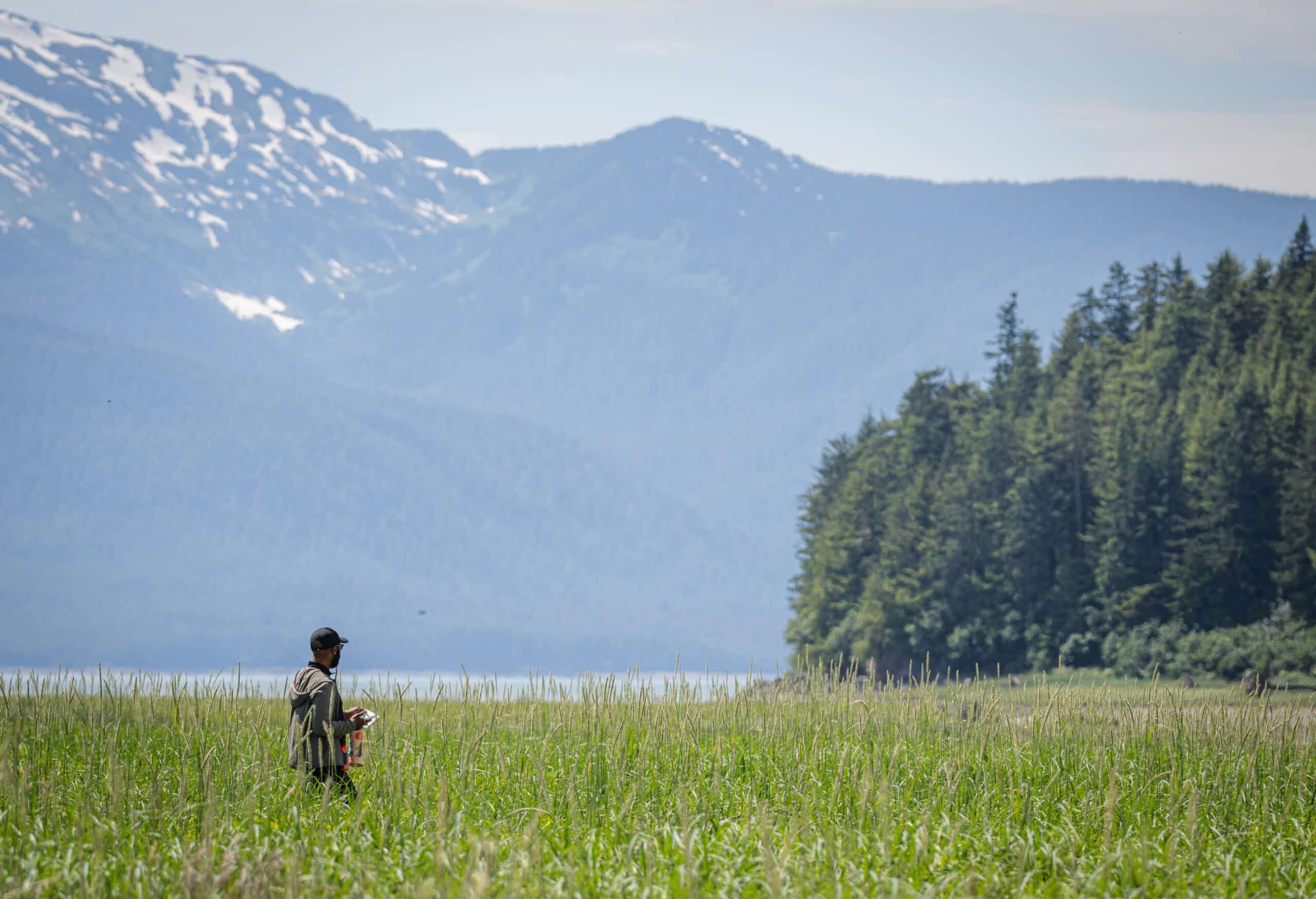
Golden surveys a field site.
photo by Erin Towns Photography
Yet even in this stage, just as in a primary forest, dynamic change continues. A gap in the canopy lets in light, sparking fresh growth and kickstarting another round of succession. We find ourselves asking: How might we spark deep and lasting change for a just climate future? The forest teaches us that the answers lie in cycles of renewal, in allowing space for the new while honoring the stability of what’s been built.




